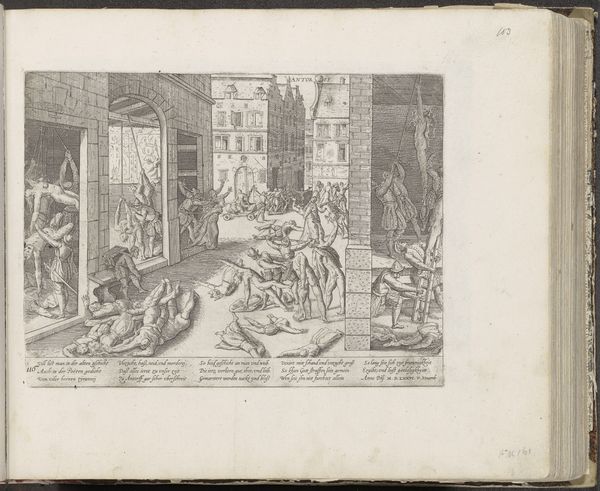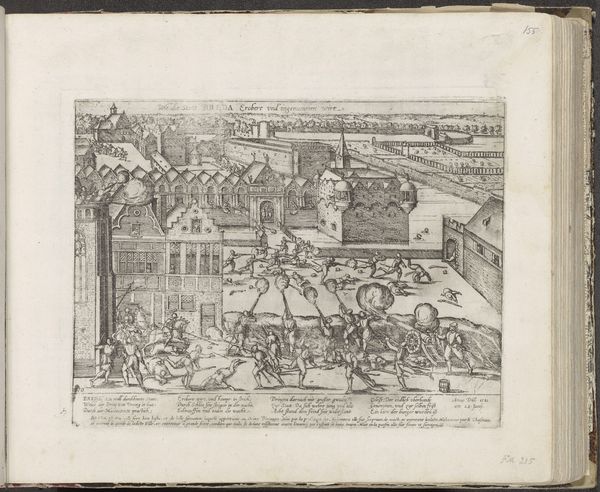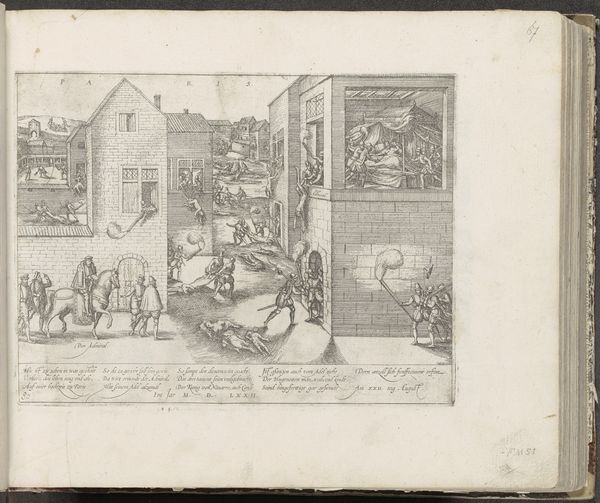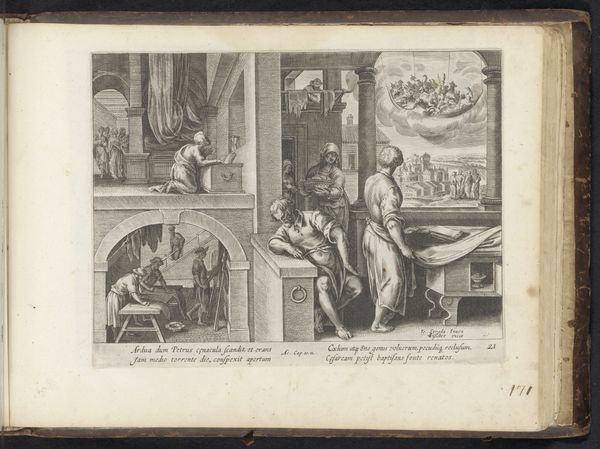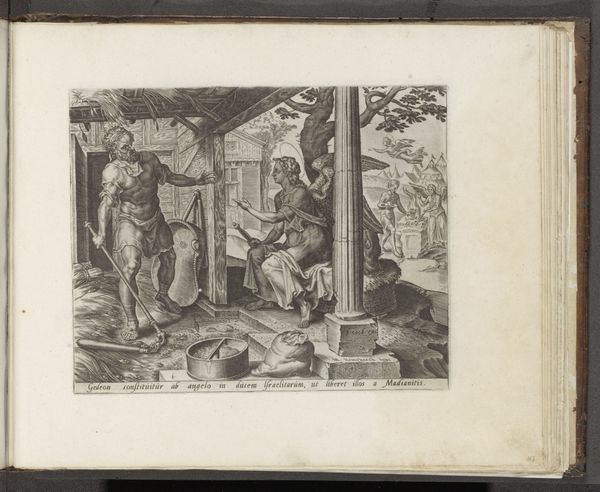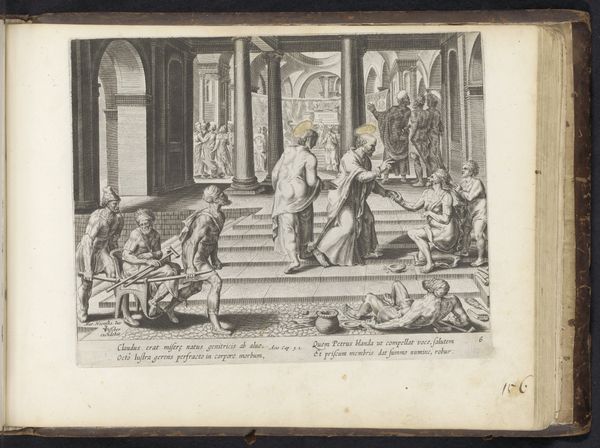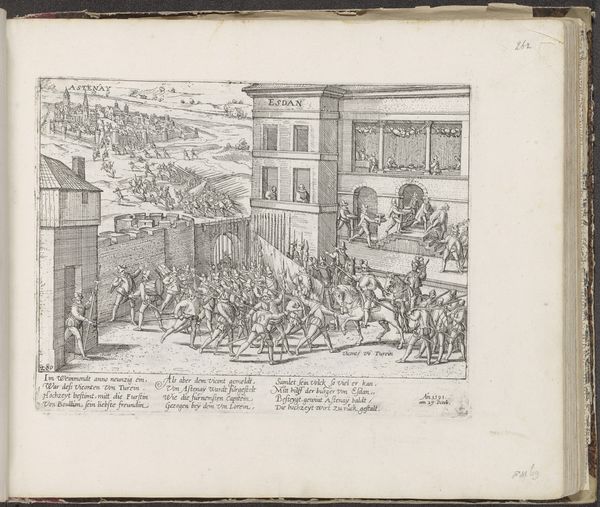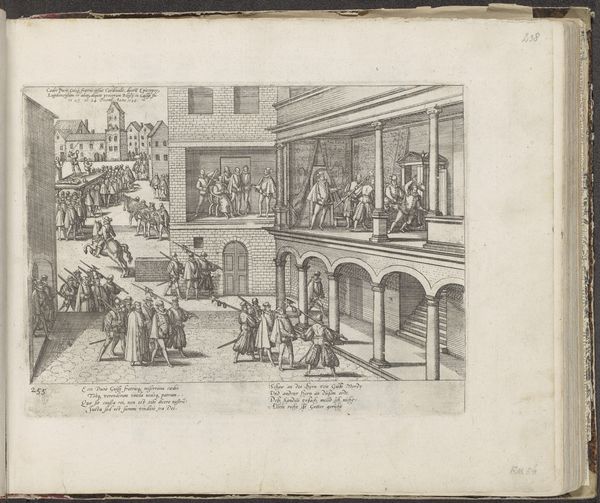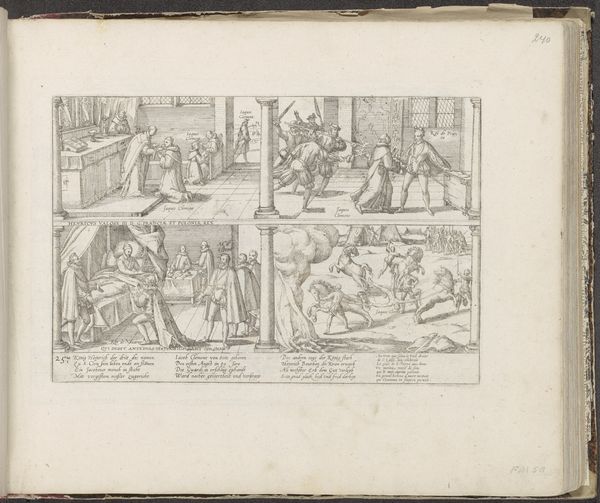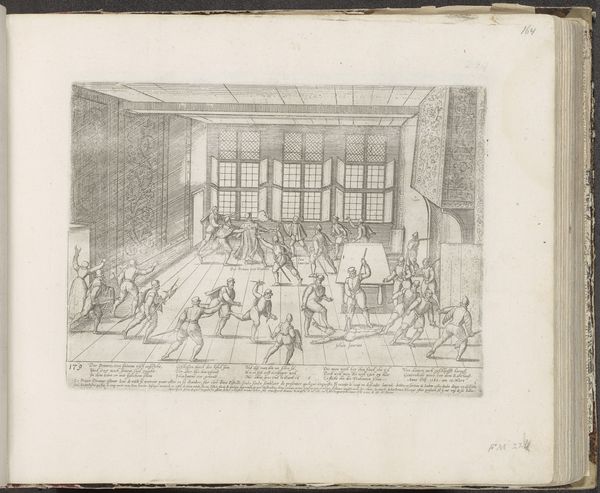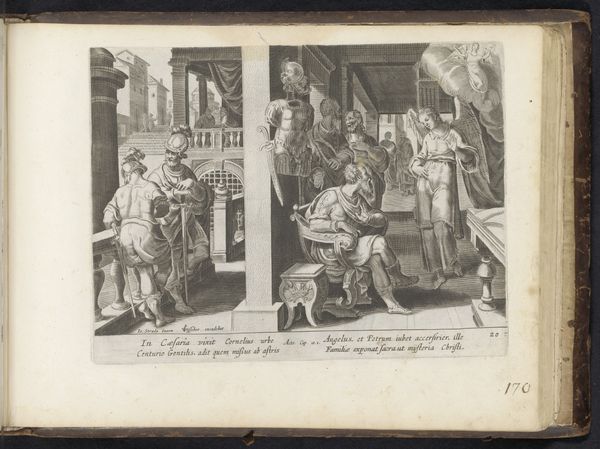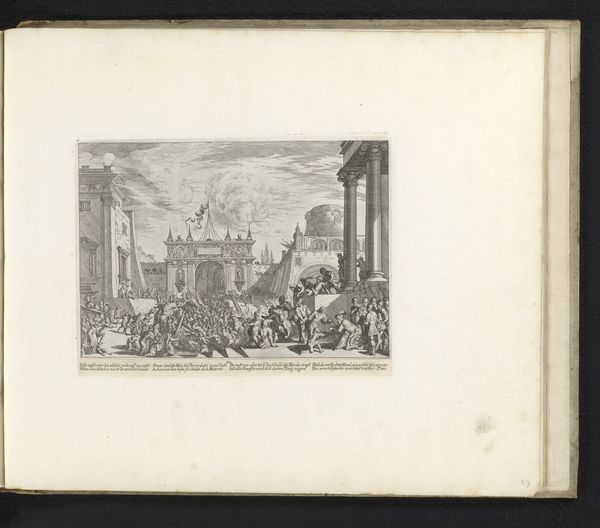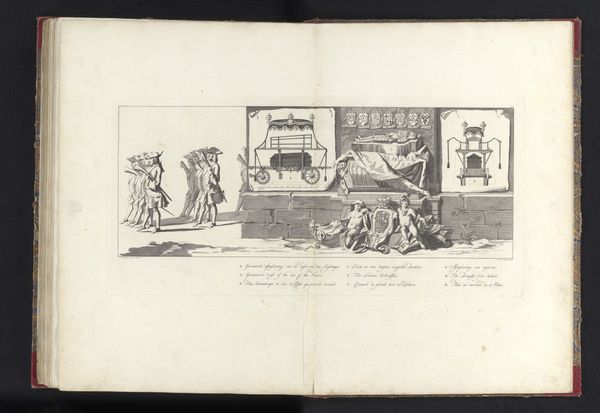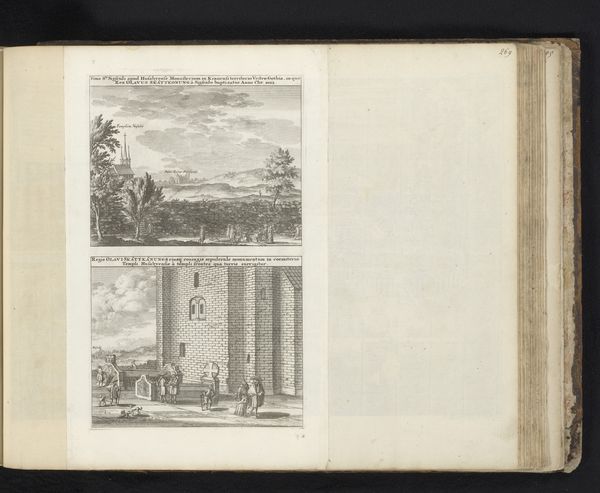
Dimensions: height 205 mm, width 282 mm
Copyright: Rijks Museum: Open Domain
This engraving, made in the Netherlands in 1584 by Frans Hogenberg, depicts the assassination of William of Orange. It is a visual representation that reflects the political turmoil of the time. The image creates meaning through its detailed depiction of the event, using visual codes and cultural references to convey a narrative. Consider the historical context: the Netherlands was in the midst of a struggle for independence from Spain, with William of Orange as a key leader. This event had a profound impact on the Dutch identity and the course of their history. The print is clearly partisan, showing the assassin as a lone actor. The Rijksmuseum, as an institution, plays a crucial role in preserving and interpreting such artifacts. It shapes our understanding of the past and the politics of imagery. Researching primary sources, such as pamphlets and eyewitness accounts, can provide deeper insights into the social and institutional context of this artwork. It reminds us that the meaning of art is contingent on the social and institutional context in which it was created and is viewed.
Comments
No comments
Be the first to comment and join the conversation on the ultimate creative platform.
